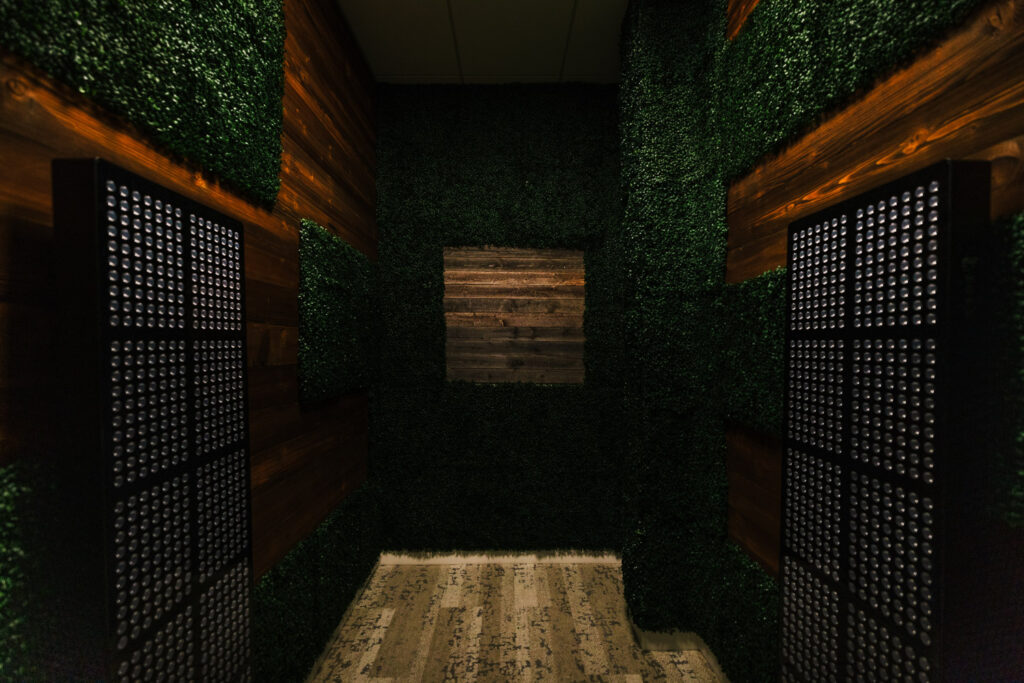Let's talk
- 121 Almeria Ave – Suite #1
- Coral Gables, FL. 33134

Wellness Consultant
A gentle and non-invasive treatment that does not involve surgery, chemicals, or drugs. It is a safe and natural way to support the body’s own healing and regenerative processes.
The therapy utilizes specific wavelengths of red (630-700nm) and near-infrared (810-880nm) light that have been extensively studied for their positive effects on cells and tissues.
Penetrates the skin and is absorbed by cells, leading to improved energy production, increased circulation, and enhanced cellular metabolism. This can benefit various bodily functions.
Scientifically shown to reduce pain and inflammation, making it a popular choice for individuals dealing with chronic pain, arthritis, or injuries.
Promotes collagen production, leading to smoother, firmer, and more youthful-looking skin. It is used to address issues like wrinkles, scars, and acne.
Often used by top athletes to speed up muscle recovery, reduce soreness, and improve performance.
Linked to potential improvements in mood and sleep patterns, possibly by influencing circadian rhythms and hormone production.
Some studies suggest that red light therapy can stimulate hair follicles and encourage hair growth, making it a valuable tool for individuals dealing with hair loss.
Beneficial for those with conditions like psoriasis or eczema. Also helps accelerates the body’s natural healing processes, making it useful for wound management and post-surgery recovery.
Red light therapy works at the cellular level by stimulating the mitochondria, the “powerhouses” of the cells, to produce more ATP (adenosine triphosphate), which is the energy currency of the cell. This increase in cellular energy can enhance cellular function and repair processes.
Red light therapy has been shown to accelerate wound healing by promoting the proliferation of fibroblasts, which are cells involved in the production of collagen and other extracellular matrix components necessary for tissue repair. It can also stimulate angiogenesis, the formation of new blood vessels, which improves blood flow and oxygenation to the tissues.
Red light therapy has anti-inflammatory effects by modulating the activity of immune cells and reducing the production of pro-inflammatory cytokines. This can help alleviate pain and swelling associated with various inflammatory conditions, such as arthritis and tendonitis.
Red light therapy has analgesic effects by modulating nerve activity and reducing the transmission of pain signals to the brain. It can help alleviate both acute and chronic pain conditions, including musculoskeletal pain, neuropathic pain, and migraine headaches.
Red light therapy has been used for cosmetic purposes to improve the appearance of the skin, including reducing wrinkles and fine lines, improving skin tone and texture, and promoting collagen production. It can also help treat conditions such as acne, rosacea, and psoriasis by reducing inflammation and promoting tissue repair.



DISCLAIMER: This website is an educational service that provides general health and wellness information only. It is not intended to diagnose, treat, or cure any health-related condition. Please always consult a physician regarding your health before starting any testosterone or peptide therapy program. Results vary from patient to patient. These statements have not been evaluated by the Food and Drug Administration. These services and treatments are not intended to diagnose, treat, cure, or prevent any disease.